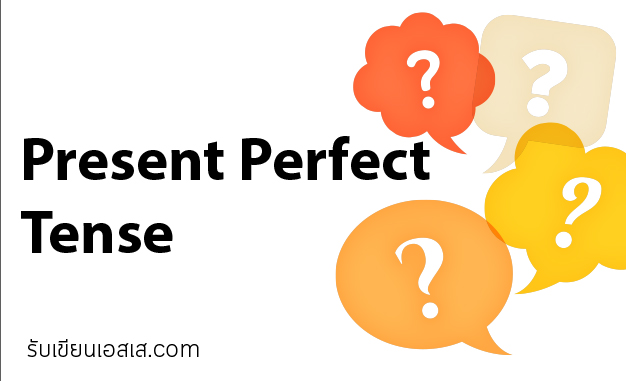Article (A/ An/ The)
Article คือคำนำหน้านามมีทั้งหมด 3 ตัวคือ “a/ an/ the” แบ่งเป็นการใช้อย่างกว้าง ๆ 3 แบบคือใช้ a/ an นำหน้าคำนามนับได้เอกพจน์ที่ไม่เฉพาะเจาะจง และใช้ “the” นำหน้าคำนามนับได้เอกพจน์หรือพหูพจน์ และคำนามนับไม่ได้ที่ชี้เฉพาะเจาะจง
การใช้ A และ An
“A” ใช้นำหน้าคำนามที่ขึ้นต้นด้วยพยัญชนะหรือสระที่ออกเสียงพยัญชนะ เช่น a university, a student ส่วน “An” ใช้นำหน้าคำนามที่ขึ้นต้นด้วยสระ (a, e, i, o, u) หรือพยัญชนะที่ออกเสียงสระ เช่น an eagle, an hour
1. ใช้นำหน้าคำนามนับได้เอกพจน์เมื่อมีความหมายว่า “หนึ่ง” (แต่ในภาษาไทยอาจไม่จำเป็นต้องแปลว่า “หนึ่ง” เสมอไป) โดยไม่ชี้เฉพาะเจาะจงว่าเป็นอันไหนหรือคนไหน
ตัวอย่าง
- John is a good friend of mine.
- The following story is an interesting one.
2.ใช้กับคำนามเอกพจน์ที่แสดงอาชีพ เช่น an actress, an actor, a lawer, a dentist, a singer และใช้กับคำนามเอกพจน์ที่ตามหลัง v. to be
ตัวอย่าง
- He is a student.
- A cheerful person is always in a good mood.
3. ใช้กับคำนามเกี่ยวกับเวลา ราคา และการชั่ง/ ตวง/ วัด มีความหมายเท่ากับ “Per (ต่อ)” เช่น 30 baht an hour, 2 baht a litre, three times a week.
ตัวอย่าง
- Rome was not built in a day.
- It costs 5 baht a kilo.
** แต่ถ้าเป็นการบอกปริมาณ เช่น เป็นกิโล/ หลา/ เมตร/ โหล/ ลิตร/ ปอนด์ จะต้องใช้ “the” นำหน้าหน่วยที่บอกปริมาณเหล่านี้ “by + the + kilo/ yard/ metre/ dozen/ litre/ pound”
ตัวอย่าง
- Petrol in Thailand is sold by the litre.
4. ใช้นำหน้าคำนามที่ตามหลังกริยา ซึ่งทำหน้าที่เป็นส่วนเติมเต็มของกริยา ไม่ใช่กรรมของกริยาดังกล่าว
ตัวอย่าง
- He became a bachelor.
5. ใช้กับวลีบางวลีต่อไปนี้
| be a pity at a distance take a walk keep in a secretbe a shame at a discount take an interest have a good timein a hurry in a sentence make a speech on an average |
ตัวอย่าง
- I am in a hurry to get to my class.
- It’s a shame that he said it.
6. ใช้ “a” นำหน้า “large/ small/ minor + part of”
หมายเหตุ : หากหน้า “part of” เป็น “greater/ larger/ greatest/ largest” จะต้องใช้ “the” นำหน้า “part of” แต่ถ้าหน้า “part of” ไม่มีคุณศัพท์เหล่านี้ไม่ต้องเติม article หน้า “part of”
ตัวอย่าง
- Part of the book is torn.
- I forgot a small part of my lecture.
- Ubol’s father gave her the largest part of his wealth.
7. ใช้ “a” นำหน้า “little” (ใช้กับนานนับไม่ได้) และ “few” (ใช้กับนามนับได้พหูพจน์)
| a little/ a few = มีน้อย แต่พอมีอยู่บ้าง little/ few = มีน้อยจนแทบจะไม่มีเลย |
ตัวอย่าง
- There are a few mistakes in his papers.
8. ใช้นำหน้าคำนามที่เป็นชื่อโรคเกี่ยวกับอาการปวดหัวตัวร้อน หรือมีไข้เล็กๆ น้อย ๆ
| Have + a + headache/ cough/ cold/ fever/ pain/ toothache/ heart attack |
ตัวอย่าง
- I had quite a headache yesterday.
หมายเหตุ : โรคที่เกี่ยวกับความรู้สึก ซึ่งใช้ในความหมายพหูพจน์ จะใช้ “the” นำหน้า เช่น the creeps
(ความรู้สึกขยะแขยง), the horrors (ความกลัวมาก ๆ), the dumps (ความมีอารมณ์ขุ่นมัว)
: ถ้าเป็นชื่อโรคทั่ว ๆ ไปจำไม่มี article นำหน้า เช่น hives (ลมพิษ), cancer, AIDS,
Malaria
ตัวอย่าง
- Whenever he eats shrimp, he gets hives. (Shrimp = กุ้งฝอย)
- Many people are afraid of AIDS.
9. ใช้นำหน้าคำนามที่เป็นจำนวน เช่น a couple, a score, a dozen, a hundred, a thousand, a million, half a dozen
ตัวอย่าง
- I saw USA a couple of weeks ago.
10. ใช้นำหน้าคำอวยพรในโอกาสต่าง ๆ เช่น Merry Christmas, Happy New Year
ตัวอย่าง
- I wish you a Merry Christmas and a Happy New Year.
11. ใช้ a, an นำหน้านามเอกพจน์นับได้ซึ่งไปเรียงตามหลังคำคุณศัพท์โดยมี such อยู่ข้างหน้า
| Such + a + Adjective + Noun |
ตัวอย่าง
- It is such a hot day he can’t work. มันเป็นวันที่ร้อนเสียจนเขาทำงานไม่ได้
- It is such an interesting movie I can’t stand seeing. มันเป็นภาพยนตร์ที่น่าสนใจจนผมอดดูไม่ได้
การใช้ The
1. ใช้นำหน้าคำนามที่ชี้เฉพาะเจาะจง โดยส่วนใหญ่แล้วมักจะมี Relative Clause (อนุประโยคที่ขึ้นต้นด้วย “who/ whom/ which/ whose/ that/ where”) อนุประโยคหรือบุรพบทวลี (วลีที่ขึ้นต้นด้วยคำบุรพบท เช่น in/ on/ at) มาขยายอยู่ข้างหลังคำนามนั้น เพื่อบ่งบอกให้รู้ว่าหมายถึงใครคนใดหรืออย่างไร
ตัวอย่าง
- The person whom you know is my music teacher.
- The flowers which Jim has picked up are new in the vase.
- Adam, the football coach, will resign this year.
2. ใช้นำหน้าคำนามที่ผู้พูดและผู้ฟังรู้จักกันดีว่าหมายถึงใครคนใดหรืออะไร จนไม่ต้องอธิบายอีก หรือบางคำนามนั้นกล่าวมาแล้วอย่างน้อยหนึ่งครั้ง
ตัวอย่าง
- The man is here.
- That’s a book. Please put the book back on the shelf.
3. ใช้นำหน้าคำนามที่ต้องการจะย้ำหรือเน้น หรือมีค่าควรที่จะกล่าวถึง
ตัวอย่าง
- He made the speech of the occasion.
- The basis of all effective oral and written work is the correct sentence.
4. ใช้นำหน้าคำคุณศัพท์เพื่อทำให้คำนั้นกลายเป็นคำนาม
ตัวอย่าง the good (คนดี / ความดี) the poor (คนจน/ ความยากจน)
the happy (ความสุข) the wicked (คนชั่ว/ ความชั่วร้าย)
- The good is preferable to the beautiful.
- The lucky always get what they want.
5. ใช้นำหน้าคำคุณศัพท์ในขั้นสูงสุด
ตัวอย่าง
- He is the best student in class.
- I will give you the lowest price I can.
6. ใช้นำหน้าชื่อคนหรือชื่อสกุลที่มีความหมายพหูพจน์ เช่น the smiths (ครอบครัวสมิธ) the Miss Alexanders (นางสาวอเล็กซานเดอร์หลายคน)
ตัวอย่าง
- The Smiths left for Europe yesterday.
- Have you heard of the Miss Alexanders’ arrival?
กรณีที่ไม่ใช้ Article (ที่มีในข้อสอบบ่อย ๆ)
ไม่ใช้นำหน้าคำนามนับไม่ได้ เช่น
Light Blood Butter Cheese Coffee Food
Life Beer Money Bread Milk Shrimp
Water Ice tea Music Time Oil Sugar
Meat Silk Salt Pepper Earth (ดิน)
Ex.
- Fish and chips, ham and eggs, spaghetti and meat balls are single dishes in American restaurants. (chips = มันเทศที่หั่นเป็นชิ้นๆ)
***ยังไม่หมดนะค่ะ ยังมีเนื้อหาที่เกี่ยวข้องกับคำนำหน้านามอีกเยอะที่เราต้องศึกษา สามารถหาอ่านเพิ่มเติมได้จากความรู้อื่นๆ ค่ะ สู้ๆ ขยันๆ ค่ะ***


